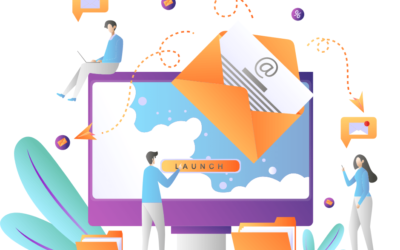Marketing automation has become essential to the overall success of e-commerce sites. Today, about 80% of businesses have already adopted some level of automation.
Their goal: To use software to enable personalisation, in order to generate significant new revenue and improve return on investment. Because when done right, automation enables e-commerce companies to conduct business just like Amazon:
- Nurture prospects with highly personalised, relevant content.
- Use multiple touchpoints to get them closer to conversion.
- Once converted, turn customers into delighted, loyal referrers.
If you’ve only started to look at marketing automation to better personalise your business, this article is for you.
Marketing Automation and Personalisation
Let’s face it: Even though the automation software market is set to reach US$15.8 billion by 2025, there are still some marketers who see it as an added cost or even a glorified email marketing platform.
Meanwhile, tech-savvy consumers are increasingly frustrated with websites that do not tailor content to their specific needs. According to studies about retail customers, e-commerce visitors assume that marketing content will be responsive, to cater to their individual needs rather than just treat them like part of one big pool of potential buyers. Your website users expect personalisation; and if they don’t get it, they will shop elsewhere.
The problem is that, even though they are aware of the importance, most marketers still struggle to create custom marketing content. Enter automation solutions, which allow businesses to go beyond sticking their customer’s first name in the email subject line. Marketing automation offers various techniques to eradicate manual processes and more importantly, to offer every customer a unique experience.
#1 Satisfying customers’ specific needs
Customers don’t know what they want, Steve Jobs once said. Therefore, the goal of a personalised marketing strategy is to determine specifically what customers want and to present it to them in the right place at the right time. One great example would be to predict what returning customers want and are most likely to purchase when they next visit your e-commerce site.
Based on a consumer’s past purchases, their Internet activity, and social media behaviour, for instance, you can utilise analytics tools to predict what they might want to buy when they next visit your store. Recommending a few products that could interest them is an excellent way to boost personalisation.
#2 Dear {firstname}: Personalised vs. generic messages
More than half of consumers say that email is still the best way for brands to contact them, but only if the messages are tailored to their unique interests.
It’s understandable for customers to feel indifferent when they receive generic messages that don’t align to their specific tastes. Even so, 39% of marketers still never personalise their emails, much less apply proper segmentation, even though using batch or blast emails, while easier, immediately and drastically reduces the chances of converting leads to customers.
Start simple, by using messaging personalisation to introduce dynamic content into your newsletters and other communications. For example, you can easily create custom fields for different buyer personas, sort them automatically or manually, and then segment them separately.
#3 Personalising on-site service
Providing personalised customer service and on-site engagement is where it gets tricky for most companies. But current marketing automation and artificial intelligence (AI) solutions are becoming more and more accessible, even to new users.
AI applications in retail have the unique capability to delve deep into intent. Through insights from interactions between customer and machine, brands can build a more personal connection with consumers and thus, influence their shopping behaviour. For example, chatbot services are now embedded into tools we already use, like customer support platforms and social media sites. More efficient and less costly than human-enabled conversations, chatbots can take over recording customer data or offering FAQs for the most common queries you receive.
By making chat service available 24/7 without having to deploy staff on weekends or after hours, you are able to increase your rate of customer acquisition and retention. Never lose a sale again.
As marketing automation tools grow increasingly sophisticated, so are they becoming more accessible to marketers. Sure, it’s easy to feel overwhelmed when you think about customising for hundreds or even thousands of users. But as we illustrated in this article, it doesn’t need to be overly technical or complicated to start offering your customers a more personalised experience.
Digital Excellence specialises in the implementation of paid marketing automation strategies for e-commerce, having provided our clients with greater flexibility and better control over their next-step initiatives. Let’s have a chat and determine the best solution for your marketing automation needs.





0 Comments